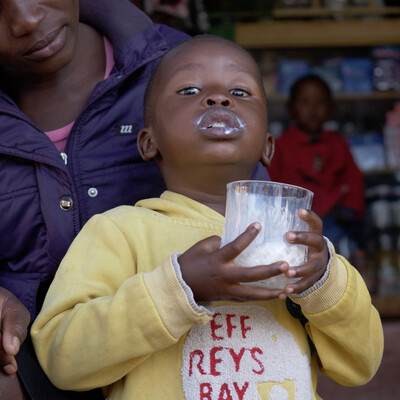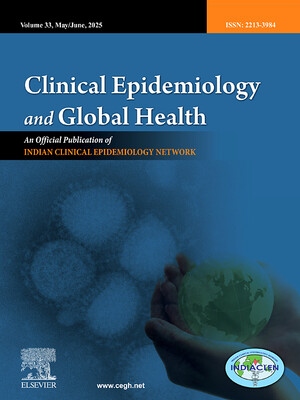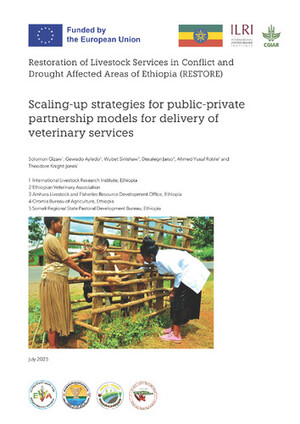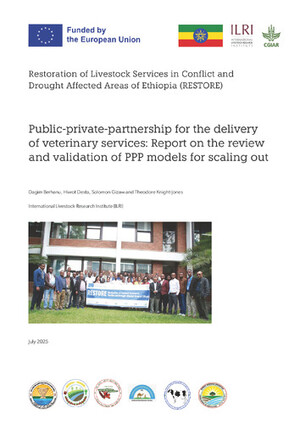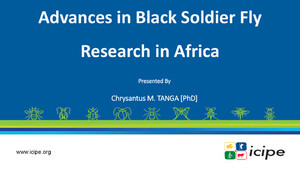
Webinar recording: Livestock and Livelihoods: The Critical Crossroads of Animal, Human, and Planetary Health: Scaling Up One Health
The rising human population has led to an increase in demand for animal-sourced foods, particularly meat, milk and eggs. This demand for livestock products has led to opportunities for increased nutrition, income, equity and livelihoods, especially for people in developing countries—the majority of whom depend on livestock for survival. However, there are concerns about the intensification of livestock production and the threat it poses to the health of humans, animals, and the environment through land degradation, air and water pollution, and global warming caused by greenhouse gas emissions.
To mitigate such threats and protect the livelihoods of populations dependent on livestock, a One Health approach that recognizes that the health of people is closely connected to the health of animals and our shared environment needs to be scaled up to mitigate negative environmental impacts, and to reduce the risk of antimicrobial resistance, unsafe food, and zoonotic infections.
This is the discussion that kicked off a webinar held on 21 September, hosted by Land O’Lakes Venture37 and the International Livestock Research Institute (ILRI) titled: ‘The Critical Crossroads of Animal, Human and Environment Health: Scaling Up One Health’. The webinar was moderated by Mark Mitchell, director of livestock and dairy at Land O’Lakes Venture37, and began with a keynote address from Kristina Roesel, a scientist of the Animal and Human Health program at ILRI.
Roesel noted that to address threats at the human-animal-environment interface, livestock producers need to focus on three key actions of the One Health approach: prepare, detect, and respond. ‘To be prepared, we need to utilize local capacity and generate data that will let us know where to invest and detect.’
She further added that ‘to detect diseases, there is a need to understand the different zoonotic pathogens, to understand the process of infection and host immune response that will enable scientists develop diagnostic tools, vaccines, and strategies to target these zoonotic diseases. In addition, to respond to disease threats of pandemic potential a vaccine needs to be ready and available to the people who need it.’
This was followed by lightning talks, including a contribution by Bernard Bett, a scientist at ILRI and team leader at the One Health Research, Education and Outreach Centre in Africa (OHRECA). He cited that scaling One Health is an ambitious process and should focus on two different types of scaling: vertical expansion through institutionalization at the national level and horizontal expansion across local actors. He gave examples of how OHRECA is scaling One Health vertically by evaluating existing One Health platforms in East and West Africa to identify gaps and implement interventions that will increase efficiency. OHRECA is also building partnerships to address disease control across the regions.
On the horizontal scaling of One Health, Bernard highlighted that there are opportunities provided by local expertise and existing One Health platforms, as well as existing challenges. These include a lack of financing in animal health systems and difficulty in determining how to measure scaling of One Health. Bett and Roesel both cited the need for more data in this area.
Lasha Avaliani, the deputy chief of party of the USAID-funded Safety and Quality Investment in Livestock (SQIL) program, implemented by Venture37, provided insights on how SQIL has conducted training in different One Health-related topics. These included food safety and quality, detecting disease in animals, and avoiding antimicrobial resistance to strengthen market systems. In detailing the importance of working with public and private actors to increase the adoption of One Health-related practices, Avaliani described how programs should work with government actors, farmers, and consumers across the livestock sector. They should spread awareness of One Health principles in terms that everyone can understand. When discussing the challenges in scaling One Health programs, Avaliani mentioned how using printed and online materials have been crucial in overcoming the challenges of conducting training during COVID-19 restrictions.
Bedasa Eba, research officer at ILRI, highlighted the importance of rangelands for One Health. He said, ‘Rangelands cover more than half the world’s surface, livestock systems cover 84 per cent of rangelands, and more than 50 million pastoralists rely on rangelands in sub-Saharan Africa.’ He added that rangeland health is a key consideration for One Health programs because proper rangeland management can reduce possible negative environmental impacts caused by livestock, such as land degradation. Careful management also allows animals to be spread out over more land, reducing the spread of disease. The entire value chain benefits from improved rangeland management, and healthy rangelands lead to healthy animals, healthy livestock products, and healthy people, all of which are key components of One Health.
To wrap up the webinar, Christine Jost, Global Health Support Initiative III, senior livestock technical advisor with the United States Agency for International Development (USAID) -Bureau for Humanitarian Assistance, stated, ‘One Health is not just a research approach, it’s also an approach to practice, policy, capacity building that recognizes and supports the inextricable linkages between environmental, human and animal health. As livestock experts, we need to continually challenge ourselves to think about and address what livestock research and development means for the health and wellbeing of people and the environments in which we live.’
The webinar ‘The Critical Crossroads of Animal, Human, and Planetary Health: Scaling Up One Health’ is part of a joint webinar series hosted by ILRI and Venture37 called Livestock and Livelihoods. The series explores how the livestock sector can bring solutions to key global challenges.
Click here to watch a recording of the webinar and here for the first webinar in the Livestock and Livelihoods series” ‘Leveraging Livestock to Combat Malnutrition’.
The header image is a farmer with his sheep in Debre Birhan, Ethiopia (Photo credit: ILRI/Apollo Habtamu).








